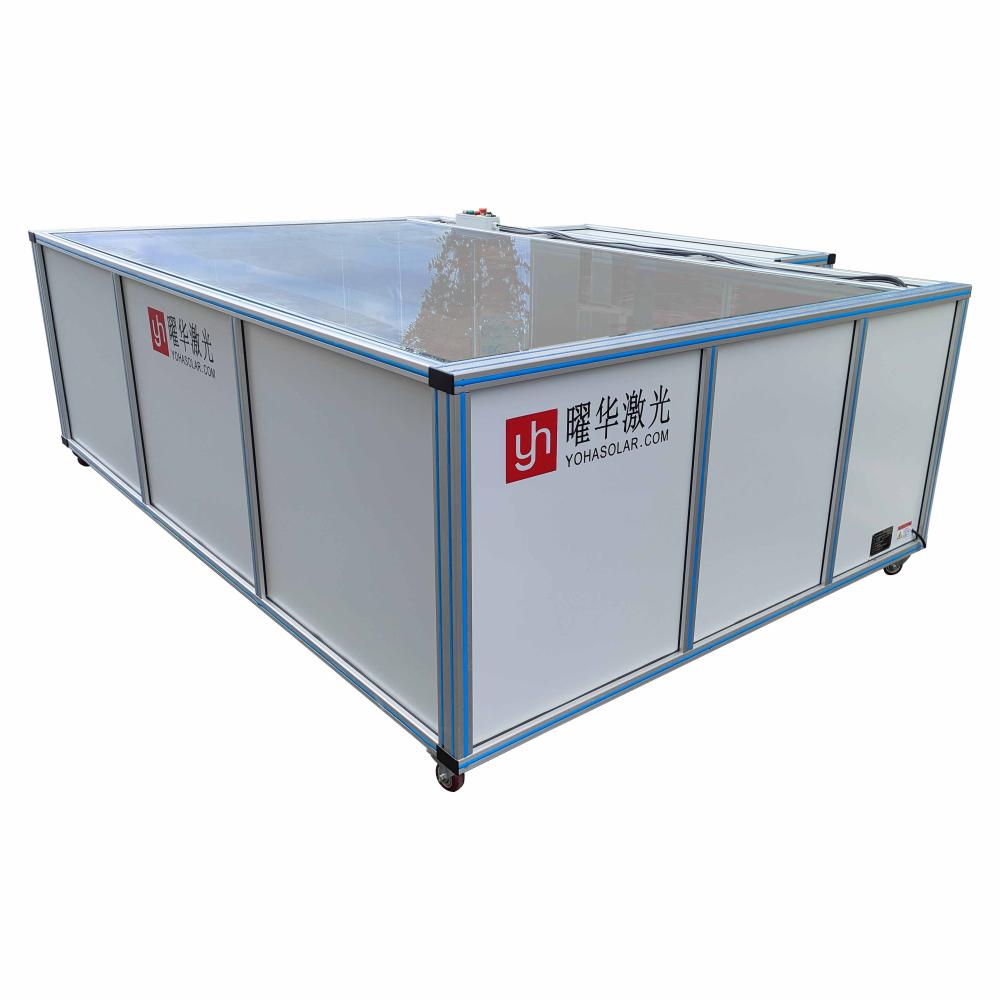Welcome to Wuhan Yoha Solar Technology Co., Ltd!
common problem
Site Map
Language:
 Chinese
Chinese
 English
English
Welcome to Wuhan Yoha Solar Technology Co., Ltd!
common problem
Site Map
Language:
 Chinese
Chinese
 English
English
On the production line of photovoltaic modules, every panel that is about to leave the factory needs to undergo strict "physical examinations" one after another. Among them, EL testing, or electroluminescence testing, is like a quality inspector with a sharp "eye", able to see through the interior of components and discover hidden problems that are difficult to detect with the naked eye. Today, let's talk about the key equipment on this production line - EL tester, and see how it works and where it plays an irreplaceable role.

The basic principle of EL tester: let the components "light up" and speak on their own
The core principle of EL testing is actually similar to a solar cell operating in reverse. We all know that photovoltaic modules generate current under illumination; The EL test, on the other hand, takes the opposite approach by applying a forward DC current to the component, which prompts the PN junction inside the battery cell to actively emit infrared light. This process is called "electroluminescence" in physics.
You can imagine a perfectly intact battery cell with a complete and uniform internal microstructure, which emits uniformly intense infrared light when current flows through it. However, once there are defects inside the battery cell, such as subtle cracks, impurities, or hidden cracks or broken grids caused by poor welding processes, the current path in these areas will be obstructed or altered.
When encountering these "roadblocks", the current either cannot pass through, causing the area to be dull and lifeless; Either it will be concentrated and bypassed, resulting in abnormally bright local areas. These changes in brightness and darkness, although invisible to the naked eye, can be clearly captured by EL tester cameras that are extremely sensitive to infrared light. Ultimately, the computer will convert these infrared signals into a grayscale image with alternating light and dark. On this' physical examination report ', bright areas usually represent high current density and normal function, while any dim lines, patches, or shadows point to possible internal defects.
So, the essence of EL testing is to excite the component to emit light and then accurately locate its internal "health status" through "reading the image". It is a non-destructive and high-precision detection method.
Key Applications of EL Testers in Production Lines
After understanding the principle, let's take a look at how the EL tester runs through the modern photovoltaic production process. It is mainly active in the following key links:
Online production monitoring (online EL testing):
This is a test conducted before the battery cells have completed serial welding but have not yet been laminated and packaged. At this time, the battery cells are still exposed. If the EL image shows that a certain battery cell has serious hidden cracks or welding problems, the operator can immediately remove it from the production line for repair or replacement. This step is like a 'midway check', which can effectively avoid bringing defective battery cells into the subsequent expensive packaging process, greatly saving costs.
Final factory inspection (offline EL testing):
After the components are fully manufactured and all processes such as lamination, framing, and junction box installation are completed, each component must undergo final EL testing. This' final inspection 'process is crucial as it ensures the overall quality of the products leaving the factory. Even after the lamination process, EL testing can still penetrate the packaging material and clearly display whether new hidden cracks or damage have occurred in the battery cells during the subsequent process. Only components that pass this inspection can be labeled as qualified and delivered to customers with peace of mind.
Process improvement and problem tracing:
The value of EL tester lies not only in eliminating defective products. By analyzing a large number of EL images, quality engineers can trace the root cause of problems in reverse. For example, if specific types of hidden cracks are frequently found in the same batch of components, it may indicate improper parameter settings of the welding machine, problems with pressure or temperature control in the laminating process, or mechanical stress points during material handling. These valuable data from EL testing provide the most intuitive and reliable basis for continuously optimizing production processes.
In summary, the EL tester is no longer just a simple "pass/fail" judge at the end of the production line. It has been deeply integrated into the manufacturing process and has become one of the core tools for ensuring product quality, improving production yield, and optimizing process parameters. It uses silent infrared images to tell producers the true story behind every photovoltaic module, ensuring that every clean electricity flowing to the market comes from a solid and reliable quality commitment.
keywords:TOP
18086473422
MESSAGE
